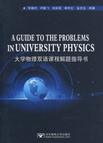大学物理双语教学解题指导书
出版时间:2010-9 出版社:北京邮电大学出版社 作者:张晓光 等编著 页数:248
前言
2001年教育部在《关于加强高等学校本科教学工作提高教学质量的若干意见》中明确要求,高等学校的“本科教学要创造条件,引进原版外语教材,使用英语等外语进行公共课和专业课教学”。近年来,我国许多高校都开始试行公共课程与专业课程的双语教学。物理学是一门自然科学,研究自然界物质的运动形式和运动规律,有一套完整的研究认识规律,与使用的语言无关,语言只是研究物理和描述自然的工具,不能替代科学的思维。但是由于社会和历史的原因,近几百年来科学技术的成果大多是用英语发表的。不论是科学技术专业杂志,还是各种国际学术会议,大都将英语作为交流语言。从这个意义上可以说“现代科学技术的研究主要是用英语思考”,而现代科学技术大多是物理学的研究成果或者相关分支学科,因此《大学物理》课程采用双语教学十分重要,是有益的教学形式。北京邮电大学早在2005年就开始了“大学物理”双语课的尝试,其背景是2004年北京邮电大学和英国伦敦大学玛丽女王学院联合创立学士学位联合培养项目,建立了国际学院,全部课程均用双语或者全英语教学。成绩合格的毕业生将分别获得北京邮电大学与英国伦敦大学玛丽女王学院的双学位。“大学物理”双语课是北京邮电大学国际学院的重要的基础课,由北京邮电大学理学院的资深教师承担教学任务,几年来积累了丰富的双语教学经验。由于中西方的教学模式和理念均有很大的不同,因此国内外的“大学物理”课程的广度和深度不尽相同。为了与国内“大学物理”课程教学相适应,学生在掌握物理学的基本理论的基础之上,还必须通过一定题目的训练,从而达到巩固和提高的目的。由于英文教材的深度所致,题目的难度与中文教材的题目难度相比有不足,因此有必要编写一整套适合中国“大学物理”双语教学难度的,涵盖选择、填空和计算题等习题形式的学习指导书,从而有效地弥补现有教学的不足,成为学生学习“大学物理”双语课程中的一个有效组成部分。
内容概要
大学物理双语教学是大学物理教学中的一个新鲜事物,除了需要合适的双语教材以外,还需要配套的解题指导书。本书由北京邮电大学几位教师编写,他们在北京邮电大学与英国伦敦大学玛丽女王学院合作培养本科生项目——北京邮电大学国际学院执教大学物理双语课多年,具有丰富的教学经验。 国内外的大学物理教学的广度和深度不尽相同,国外大学物理英文教材书后习题的难度与国内大学物理教程题目难度相比有不足。本书搜集了有一定难度的例题进行详细解答,并配以知识点复习(Review of the Contents),解题方法(Problem Solving Strategies),以及每章一定量的选择、填空、问答、计算题,构成一本较完备的解题指导书。本书有效地弥补了现有大学物理双语教学的不足,成为大学物理双语课程的一个有效组成部分。
书籍目录
Chapter 1 Describing Motion.Kinematics of Particles Review of the Contents Typical Examples Problem solving strategy Examples Questions and ProblemsChapter 2 Dynamics of Particles and Systems Review of the Contents Typical Examples Problem solving strategy Examples Questions and ProblemsChapter 3 Rigid Body Motion Review of the Contents Typical Examples Problem solving strategy Examples Questions and ProblemsChapter 4 Electrostatic Field Review of the Contents Typical Examples Problem solving strategy Examples Questions and ProblemsChapter 5 Magnetism Review of the Contents Typical Examples Problem solving strategy Examples Questions and ProblemsChapter 6 Inductance Review of the Contents Typical Examples Problem solving strategy Examples Questions and ProblemsChapter 7 The Kinetic Theory of Gases Review of the Contents Typical Examples Problem solving strategy Examples Questions and ProblemsChapter 8 The First Law of Thermodynamics Review of the Contents Typical Examples Problem solving strategy Examples Questions and ProblemsChapter 9 The Second Law of Thermodynamics Review of the Contents Typical Examples Problem solving strategy Examples Questions and ProblemsChapter 10 Oscillations Review of the Contents Typical Examples Problem solving strategy Examples Questions and ProblemsChapter 11 Wave Motion Review of the Contents Typical Examples Problem solving strategy Examples Questions and ProblemsChapter 12 Interference of Light Review of the Contents Typical Examples Problem solving strategy Examples Questions and ProblemsChapter 13 Diffraction of Light Review of the Contents Typical Examples Problem solving strategy Examples Questions and ProblemsChapter 14 Polarization of Light Review of the Contents Typical Examples Problem solving strategy Examples Questions and ProblemsChapter 15 Special Theory of Relativity Review of the Contents Typical Examples Problem solving strategy Examples Questions and ProblemsChapter 16 Fundamentals of Quantum Theory Review of the Contents Typical Examples Problem solving strategy Examples Questions and ProblemsAnswers to Questions and Problems
章节摘录
插图:In this chapter, we discuss the cause of motion, a field of study called dy-namics. The principles of dynamics can he wrapped up in a neat package of threestatements called Newton's laws of motion. Three theorems derived from New-ton's laws and laws of conservation are also introduced.1. Newton' s first lawContent:When no force acts on a body, or when the vector sum of all forcesacting on it (the net force) is zero, the body is in equilibrium. If the body is ini-tially at rest, it remains at rest; if it is initially in motion, it continues to movewith constant velocity. From Newton's first law, we can get the following conclusions:(1) An object has a tendency to maintain its original state of motion in theabsence of a force. This tendency is called inertia. The inertial property of a bodyis characterized by its mass.(2) The force is the only reason which makes the states of body change. Itindicates the concept of force: An interaction——can cause an acceleration of abody.
编辑推荐
《大学物理双语教学解题指导书》由北京邮电大学出版社出版。
图书封面
评论、评分、阅读与下载
用户评论 (总计7条)
- 内容简明,每一章还有练习题,都是英文的,出国准备适合先看这个。
- 这本书可以用来试试看看英文习题用的
- 全英文教程,用于准确,恰当。适合留学生出国准备使用
- 书很好 物流很快
- 如果是上双语的大学物理,那么这本书的知识点还是蛮全的,题量也比较大,可以很好的练习
- 内容详实的大物书!
- 有解题思路,有例题,有考试的所有题型:选择题、填空题、计算题。比较适合备考。
推荐图书
- 重寫我城的歷史故事
- 排污权交易
- DVD 美竹涼子 伝説
- ドラマティック涼子 美竹涼子写真集
- ラブラブ#08 美竹涼子写真集
- ラブラブ#06 美竹涼子写真集
- 美竹涼子 棘
- 美竹涼子写真集「MISTY涼子」
- Nina 1st.PHOTOBOOK Nina初ヌード写真集
- ROSE―樹本涼子写真集
- ま・り・え —助川まりえ写真集—
- G Sketch 助川まりえ1st.写真集
- 相思相愛 助川まりえ写真集
- Hのレシピ 岡本果奈美写真集 もう私これ以上絶対脱げません!
- 岡本果奈美 H4
- 岡本果奈美 えいちえっちえいち
- Eden 松本さゆき写真集
- サーカスの少女 京本有加写真集
- flapper★ 小池唯写真集
- 決意 福永ちな写真集
- 萩原舞写真集
- ゆい夏の雫 堀田ゆい夏ファースト写真集
- Chaton 水野裕子写真集
- 水野裕子写真集 zi:sip
- Secret The World―佳山三花写真集
